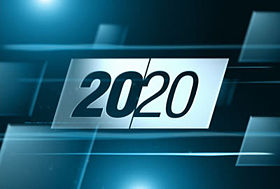More photos on Wired.com

Artist Trevor Paglen's time-exposure photographs show the streaks of light left by classified satellites.
Photo: Trevor Paglen
BERKELEY, California -- For most people, photographing something that isn't there might be tough. Not so for Trevor Paglen.
His shots of 189 secret spy satellites are the subject of a new exhibit -- despite the fact that, officially speaking, the satellites don't exist. The Other Night Sky, on display at the University of California at Berkeley Art Museum through September 14, is only a small selection from the 1,500 astrophotographs Paglen has taken thus far.
In taking these photos, Paglen is trying to draw a metaphorical connection between modern government secrecy and the doctrine of the Catholic Church in Galileo's time.
"What would it mean to find these secret moons in orbit around the earth in the same way that Galileo found these moons that shouldn't exist in orbit around Jupiter?" Paglen says.
Satellites are just the latest in Paglen's photography of supposedly nonexistent subjects. To date, he's snapped haunting images of various military sites in the Nevada deserts, "torture taxis" (private planes that whisk people off to secret prisons without judicial oversight) and uniform patches from various top-secret military programs.
While all of Paglen's projects are the result of meticulous research, he's also the first to admit that his photos aren't necessarily revelatory. That's by design. Like the blurry abstractions of his super-telephoto images showing secret military installations in Nevada, the tiny blips of satellites streaking across the night sky in his new series of photos are meant more as reminders rather than as documentation.
"I think that some of the earliest ideas in the modern period were actually from astronomy," Paglen explains. "You look at Galileo: He goes up and points his telescope up at Jupiter and finds out, hey, Jupiter has these moons."
More significant than the discovery itself, Paglen says, was the idea that anyone with a telescope could verify it and see the same exact thing that Galileo saw -- an idea Paglen is trying to re-create in his own photographs.
"It really was analogous to a certain kind of promise of democracy," says Paglen, who sees a similar anti-authoritarian premise running through his own work.
Paglen says his most recent project is the culmination of close to two years of trial-and-error experimentation with astrophotography, untold hours of fieldwork and analysis, an ongoing collaboration with amateur astronomers, and many nights in his Berkeley backyard and at California's Mono Lake.
To capture his images, the researcher and "experimental geographer" employs a motorized mount with various combinations of telescopes and digital and large-format film cameras. Paglen uses spy-satellite data compiled by Ted Molczan -- a renowned amateur astronomer profiled by Wired magazine in 2006 -- to predict where a given "black satellite" will be in the sky. Then he decides how he wants to compose the image.
"I'll find where a star will be in the compositional plane," he says. "Then I'll use one telescope, which is attached to a webcam, to focus on that star."
With the help of a computer program that controls the mount of the telescope and keeps it focused on the heavenly body, Paglen says he can get the telescope to swivel with the Earth's rotation.
He then uses another telescope attached to a high-end digital camera for his deep-sky shots, similar to the rig he used for his desert shots.
"I'll see the satellite in the sky, kind of know where it's going to be in the frame, then I'll open the shutter and take a long exposure of the satellite passing through."
Paglen's initial interest in the government's so-called "black projects" took shape while combing through U.S. Geological Survey archives of satellite prison photos in 2002. He noticed that many of the photo frames of prison sites were missing or, in some cases, heavily edited.
"I thought: What the hell is this? We still have blank spots on maps? We've mapped the whole structure of the cosmos and the human genome, so what's this all about?" Paglen said.
Eventually, those blank spots led Paglen to other covert subjects and turned a hobby into a full-time job -- one with a decidedly political stance.
"For a time, people were getting arrested for photographing the Brooklyn Bridge," Paglen notes. "So to me, what it meant to do photography also changed. There was a new kind of politics to it -- something that was very aggressive and dangerous -- and a presumption that it would reveal some kind of truth or evidence."
Ultimately, the satellite photos are an attempt to critique that attitude. While the budget for black military operations has more than doubled in the last 10 years and the government continues to espouse the virtues of secrecy, it can't prevent interested amateur astronomers from calculating the orbital paths of spy satellites.
"The National Reconnaissance Office cannot classify Kepler's laws of planetary motion," Paglen says. "They just work ... and they're unbelievably accurate."































